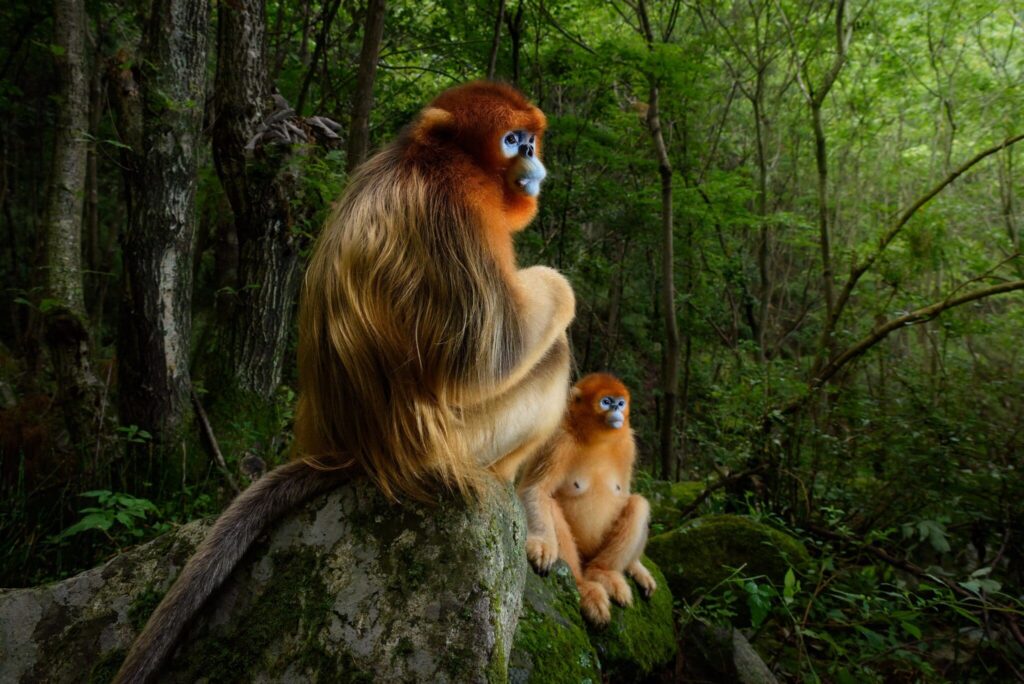
After a highly successful career in advertising, Marsel van Oosten drastically changed course. A passion for wildlife photography became his specialty and now Marsel is a renowned wildlife photographer. His photographs have been recognized with prestigious awards such as Wildlife Photographer of the Year and Travel Photographer of the Year. He is known for his masterful sense of perspective, composition, lighting and use of color.Text: Larissa Schaule Jullens
Image: Marsel van Oosten
"This photograph always gives me a double feeling. On the one hand, this is exactly what I am always looking for in my photography: a beautiful wide landscape with a small human or animal element in it to show the grandeur of nature and the nothingness of everything in it. I like simple compositions with strong shapes and graphic lines. Dune landscapes lend themselves perfectly to this. I spent weeks traveling in the Sahara Desert of Libya and since then this beautiful country has been in my personal top 3 of countries I would like to go back to. Unfortunately, given the extremely dangerous situation there, that is not possible. For me, then, this photo is primarily a reminder that man is a warlike species. The vast majority of all countries in Africa are currently not safe enough to travel through because there is fighting for power. I can really get despondent at the realization that humans are capable of landing a space vehicle on an asteroid 320 million kilometers from Earth, but beating each other's brains out because the other believes in the wrong invisible supreme being."
"The tiger is one of the most well-known endangered species. Only less than 4,000 tigers live in the wild, mainly in India. In comparison, more tigers live in captivity in the state of Texas in the US. Poaching is the biggest threat to the tiger because tiger parts are in high demand in China and Vietnam. There, all sorts of medical miracle properties are attributed to just about every part of the tiger. This belief lacks any scientific foundation and is based purely on superstition and tradition. Because there are few tigers left, the price of remedies containing tigers is rising. This makes the tiger even more attractive to organized crime who send out poachers to kill tigers. Often corrupt local governments help smuggle the tigers out of the country. Some 20 years ago, things looked much bleaker than they do today. A South African conservationist then tried to introduce a population of wild tigers into Africa. The idea was that if things went completely wrong in India, at least there would still be a population living on another continent. This project has since been a huge success and I am a big fan of out-of-the-box ideas like this to save animals from extinction. Incidentally, tigers, lions, leopards and cheetahs were once already living in India at the same time, so it's not even that crazy."
"I have a passion for nature and it is unfortunately increasingly threatened by humans. Climate change, deforestation, pollution, urbanization, poaching, etc. Through my photography I try to show the beauty of nature in a positive and inspiring way, trying to make people realize that it is all at stake. Everyone knows by now that rhinos and tigers are endangered species, but what most people don't know is that there are more than 30,000 species threatened with extinction. Like these golden stump-nosed monkeys I photographed in China. Conservation stands or falls with awareness of the issues. When I first showed my photos of this endangered monkey species, hardly anyone knew of their existence. That has completely changed now: this photo won me the title in the Wildlife Photographer of the Year Awards. This image has gone all over the world and I was able to talk about it on De Wereld Draait Door. Due to the sudden increase in fame and popularity of this species, the Chinese government decided to close the area to tourism. In that respect, this picture has done its job."
Take a look at Marsel van Oosten's website here.
© 2024 MASTERS EXPO. All rights reserved.